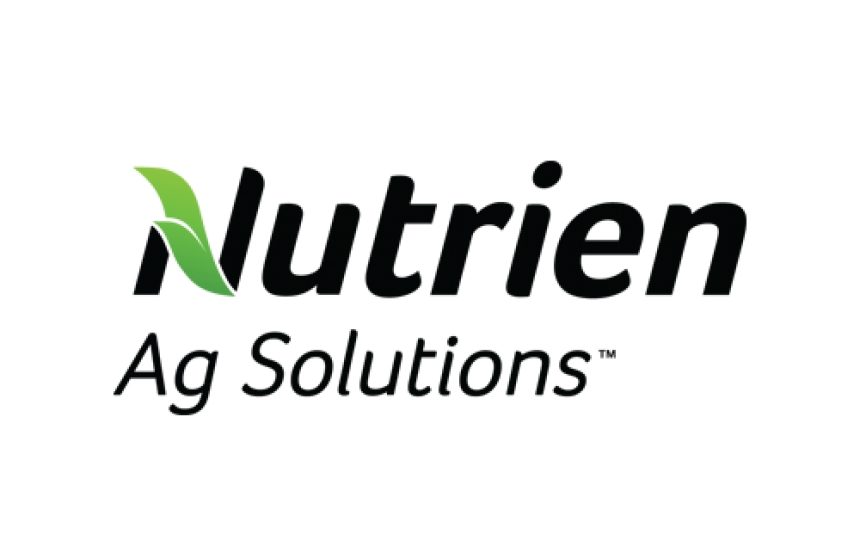by Invesco Tax & Estate team, Invesco Canada
This year has been a roller coaster for many people – but, as 2020 draws to a close, we must turn our attention to end-of-year tax planning. Consider these year-end tax tips for your clients.
Corporate investors
Assess passive investments held by Canadian-controlled private corporations (“private corporations”)
Private corporations that fund their passive investments using retained active business earnings faced higher rates of taxation on those investments in 2020. Recall that the 2018 federal budget changed taxation for private corporations earning passive investment income. A private corporation can earn up to $50,000 in yearly passive investment income on its savings without reducing its small business deduction limit. However, the small business deduction limit is reduced by $5 for every $1 of investment income above $50,000, and is completely eliminated when passive investment income reaches $150,000.
In addition, private corporations must track two refundable dividend tax on hand (RDTOH) accounts: an eligible account and a non-eligible account. The eligible account tracks taxes paid on eligible portfolio dividends, while the non-eligible account tracks taxes paid on investment income and non-eligible portfolio dividends. An ordering rule mandates that, on payment of a non-eligible dividend, a private corporation must obtain a refund from the non-eligible account before it obtains a refund from the eligible account.
Take into account the expansion of tax on split income (TOSI) rules affecting income-sprinkling arrangements to a spouse and adult children
As of January 1, 2018, the TOSI rules were expanded to further restrict adult individuals from using private corporations to sprinkle income. Unless an arrangement meets one or more of the exclusions from TOSI, the rules state that certain distributions of corporate income to related individuals will be taxed at the top marginal tax rate. TOSI applies when investment income flows to family members of the individual, whether directly or indirectly (such as through a trust or another related business). If a private business owner is contemplating a corporate reorganization, carefully assess the rules to understand whether TOSI applies.
A number of Canada Revenue Agency rulings shed light on certain arrangements related to TOSI and its impact on private corporations. If you have questions, please contact the Tax & Estate InfoService and we can explain the rules.
Be aware of the reduced active business income (ABI) rate, non-eligible dividend tax credit and gross-up factor
The ABI rate for Canadian private corporations for 2020 remains at 9% (effective January 1, 2019), reduced from 10% in 2018. This rate is in effect for the first $500,000 (the small business deduction limit for all provinces except Saskatchewan) of ABI, but adjustments must be made when passive investment income exceeds $50,000, as discussed above. As a result of the change in the ABI rate, the gross-up factor for non-eligible dividends decreased to 15% for 2019 and later years. The dividend tax credit (as a percentage of the grossed-up non-eligible dividend amount) decreased to 9% for 2019 and later years.
Long-term investors
Weigh the pros and cons of capital gain/loss selling
Investors with realized capital gains this year or in any of the preceding three years (back to 2017) can apply net capital losses realized this year against those gains. To realize capital gains and losses in 2020, trades must be executed by Tuesday, December 29 to ensure settlement by Thursday, December 31, the last business day of 2020. Remember, the year a disposition occurs for tax purposes is based on the settlement date and not the trade date. Give special attention to trades executed within the calendar year but settled in the following calendar year. These trades may appear on the relevant tax slips (e.g., T5008) and statements, but are technically reportable in the year of settlement.
Following the 2019 federal election, there was speculation about whether there would be an increase in the capital gains inclusion rate to 75% from 50%, as discussed by the New Democratic Party. Clients may wonder whether they should dispose their investments in anticipation of a potential capital gains inclusion rate increase. The 2020 federal budget date has been indefinitely postponed due to COVID-19, and we do not know whether the next federal budget will address the topic and provide corresponding details. For those who are already considering disposing of their investments, the speculation may be enough to entice them to take action. However, we encourage clients who have no concerns regarding their investments to discuss this strategy with their advisors, as much is still uncertain.
Historically, the capital gains inclusion rate was 66 2/3% from January 1988 to the end of calendar year 1989. It was last seen at 75% between January 1990 and February 27, 2000. It decreased to 66 2/3% on February 28, 2000, and set to the current 50% inclusion rate after October 17, 2000. Before January 1972, capital gains were not subject to tax. Clients should consult with a qualified tax professional who can help them implement any planning strategies.
Pay investment expenses and make charitable donations before year-end
Eligible expenses incurred to earn investment income must be paid by Thursday, December 31 to be deductible for 2020. Eligible expenses may include interest and investment advisory fees. To give clients an opportunity to deduct investment advisory fees for services rendered this year, advisors should send invoices with enough time to allow clients to make payments before the end of the year.
Clients considering making a charitable donation through cash or donating securities in kind should do so by Thursday, December 31 if they wish to claim the donation tax credit in the 2020 tax year. From a federal income tax perspective, the first $200 of donations for the year allows an individual to claim a 15% non-refundable tax credit. Donation amounts in excess of $200 enable an individual to apply a federal tax credit towards taxes payable: 29% if income is below $214,368 (for 2020) and 33% if income exceeds $214,368. That said, charitable donations can be carried forward to any of the next five years, or to any of the next 10 years for a gift of ecologically sensitive land made after February 10, 2014. Therefore, clients do not have to claim the donation tax credit on their income tax return for the current year. For more information, please refer to our Tax & Estate InfoPage “Planned charitable giving.”
Track the adjusted cost base (ACB) on investments and note transactions that nullify losses
Investors are responsible for keeping track of their own ACB. Be aware that certain transactions can affect the ACB without necessarily being tracked by the financial institutions that hold the investments.
Return of capital (ROC) distributions, which represent principal paid back to investors, are not taxable but instead reduce the ACB of the investment by the amount of the distribution. After ROC distributions reduce the ACB to nil, additional ROC distributions are taxable as capital gains in the year they are received.
“Phantom distributions,” which are distributions from exchange-traded funds (ETFs) that do not result in the issuance of more units or a change in the net asset value (NAV) of the units, may increase the ACB. Phantom distributions do not give the investor any tangible cash payments, but are taxed in the year they are received just like regular distributions. If investors do not correctly account for this by increasing the ACB by the amount of the distribution, they risk being taxed twice on the same amount when they redeem.
Certain capital losses may be “deemed to be nil” and cannot be claimed. An in-kind transfer from a non-registered plan to a registered plan – for example, a Registered Retirement Savings Plan (RRSP) or Tax-Free Savings Account (TFSA) – results in a disposition for tax purposes. Any capital gains are taxable and any capital losses are denied. Keep this in mind if funding RRSP or TFSA contributions from a non-registered account.
In addition, beware of the superficial loss rules. Loss realized on a property that is disposed of and repurchased (by the same investor or an affiliated person) within 30 days before or after the disposition is considered a superficial loss if that same or identical property continues to be held after this period. The amount of the loss is added to the property’s ACB. The same rule applies to a property acquired by a company controlled by the investor or an affiliated person or a trust for which the investor or the investor’s spouse/common-law partner is a majority interest beneficiary. It is possible to avoid a superficial loss by not acquiring an “identical” property. Two properties are generally considered identical if they are the same in all material respects and an individual would be indifferent to owning one property over the other. For more information, including a discussion of planning strategies, please refer to our Tax & Estate InfoPage “Capital loss planning.”
Consider prescribed rate spousal loans
The current prescribed rate on spousal loans is 1%, and this remains in effect for the duration of the term of the loan. Any loans created from April 1, 2018 to June 30, 2020 will use a 2% prescribed rate throughout the loan. However, loans created after June 30, 2020 will use the 1% rate.
Spousal loan arrangements permit individuals who have a higher tax rate to split income with individuals who have a lower tax rate. Payment of the accrued interest expense is due by January 30 of the following year to preserve eligibility for deductibility (for the paying spouse) and to avoid the spousal attribution rules. Also remember that the interest must be included as income for the lending spouse.
Based on internal calculations, we expect the prescribed rate for the first quarter of 2021 to remain at 1%.
Families and children
Maximize grants on Registered Education Savings Plan (RESP) contributions
Government grants on RESP contributions depend on the age of the beneficiary. The maximum amount of the basic Canada Education Savings Grant (CESG) that can be received on RESP contributions made in a beneficiary’s name in a given year is $1,000. The maximum CESG that can be received in a child’s lifetime is $7,200. To ensure the maximum CESG amount is received, contributions in a child’s name must begin no later than age 11. In addition, a minimum amount of contributions must be made before a child reaches age 16; otherwise, contributions made while the child is 16 or 17 will not be eligible for the CESG.
For more information, please refer to our Tax & Estate InfoCard “Registered Education Savings Plans.”
People with disabilities
Take advantage of Registered Disability Savings Plans (RDSPs) and the medical expense tax credit
People who claim the disability tax credit may also make use of RDSPs. These plans offer strong incentives for saving, including the opportunity to shelter investment income and growth from tax and the potential to attract free government bonds and matching government grants. Those bonds and grants are available only until the end of the year in which the beneficiary turns 49, but personal contributions may be made until the end of the year in which the beneficiary turns 59. The maximum lifetime contribution limit is $200,000. There are no annual limits on contributions.
The 2018 federal budget extended to the end of 2023 the temporary measure that allows a family member (i.e., a parent, spouse or common-law partner) of the beneficiary to be a plan holder.
Individuals can claim the medical expense tax credit on eligible expenses incurred for any 12-month period ending in the taxation year. For 2020, the amount individuals can claim federally is the total of all medical expenses exceeding the following two amounts: 3% of net income and $2,397. An equivalent provincial/territorial credit may also be available.
Home buyers and sellers
Make required Home Buyers’ Plan (HBP) repayments
Under the HBP, a first-time home buyer may withdraw up to $35,000 from an RRSP to purchase a qualifying home that he or she intends to occupy as a principal residence. A couple who both qualify can withdraw up to $70,000. A “first-time home buyer” is a Canadian resident who has not occupied a home owned by himself/herself or his or her spouse/common-law partner as a principal place of residence during the past four full calendar years. For more information on the HBP, please refer to our Tax & Estate InfoPage “Home Buyers’ Plans (HBPs).”
The repayment period for HBP participation starts the second year after the year of the HBP withdrawal. That means 2018 HBP participants must repay, or include as income, the minimum HBP amount in 2020. The first 60 days of 2021 may be used to facilitate the 2020 HBP repayment.
Additionally, the 2019 federal budget enhanced flexibility for individuals seeking to participate in the HBP after a marriage breakdown. For more information on this development, please see our Tax & Estate Matters article “Recent changes related to the Home Buyers’ Plan (HBP).”
A client who acquired a home during the calendar year and is considered a first-time home buyer may claim a non-refundable tax credit under the “Home buyers’ amount” of $5,000 (equivalent to a value of $750) on his or her income tax return for 2020.
Use the principal residence exemption (PRE)
If a client has recently sold his or her home, look into whether the PRE applies. The PRE may reduce or eliminate a capital gain (for income tax purposes) on a disposition or deemed disposition (e.g., on death) of a house on land not exceeding 0.5 hectares. A few conditions must be met for an individual to claim the PRE:
- The individual must own the property in the year the property is claimed as a principal residence
- The individual must designate the property as his or her principal residence on his or her income tax return in the year of disposition
- No other property may have been designated by the taxpayer or a member of the taxpayer’s family unit (spouse/common-law partner or child under age 18)
For all dispositions after 2015, an individual must designate the property on Schedule 3 of the income tax return. In addition, the property must be “ordinarily inhabited” in the year by the taxpayer or by a member of his or her family unit (spouse/common-law partner or child). Note that only one property may be designated by a family unit in any particular year.
If your client’s family has multiple properties, refer to our Tax & Estate InfoPage “Planning for a family cottage” for a more detailed discussion.
Retirees and seniors
Understand spousal RRSP contributions and withdrawals
Income attribution to an RRSP contributor spouse applies if the annuitant spouse makes a withdrawal before the end of the second calendar year following the spouse’s contribution. For example, a contribution made in January 2020, though deductible by a spousal contributor for the 2019 tax year, was made in the 2020 calendar year. As a result, a withdrawal from the spousal RRSP before 2023 will result in the application of the attribution rules. If that same contribution had been made in December 2019 instead, a withdrawal could be made in 2022 without triggering the attribution rules.
Make final RRSP contributions at age 71
Contributions to an RRSP can only be made up to December 31 of the year in which a person turns 71. For individuals who continue working into their early 70s, this age limit complicates the act of making a final RRSP contribution, as RRSP contribution room for a given year is not credited until the following year.
One approach is to make a final contribution in December of the year the RRSP annuitant turns 71, suffer the 1% overcontribution penalty for that month, and then be back onside in January when the room is credited to the annuitant. If the annuitant has a younger spouse, another option is to contribute to a spousal RRSP (provided the spouse is under 71) in the new year, after the contribution room is credited to the annuitant.
Make final RRSP contributions after death
The legal representative may make a final RRSP contribution into a spousal RRSP on behalf of the deceased individual. This option is only available if the deceased’s spouse/common-law partner is the annuitant. For this final RRSP contribution to take place, the deceased’s spouse/common-law partner must meet the RRSP age requirement (i.e., not be over 71 years old). Moreover, it is our understanding that to claim a deduction on contributions made on behalf of a deceased individual, the final RRSP contribution must be made into the spousal plan either in the year of death or during the first 60 days after the end of the year of death. So, if an individual passed away in 2020, RRSP contribution made on his/her behalf into his/her spouse’s/common-law partner’s RRSP may only be deductible (up to the individual’s 2020 RRSP deduction limit) if they were made in 2020 (the year of death) or within the first 60 days of 2021 (i.e., by March 1, 2021). If the contributions are made within that designated period and were not deducted from the deceased individual’s 2020 final tax return, an adjustment of the deceased’s terminal return may be allowed. The Income Tax Act does not provide for any deductibility of RRSP contributions paid (on behalf of a deceased individual) into a spouse’s/common-law partners’ RRSP after the first 60 days following the year of death.
Bear in mind the 2020 Registered Retirement Income Fund (RRIF) minimum withdrawal reduction
With the end of the year approaching, recall that your clients can still choose to reduce their RRIF minimum withdrawals. The reduction in mandatory RRIF minimum withdrawals was one of the tax relief measures the Canadian federal government implemented as part of its COVID-19 economic stimulus. Under this relief, your clients have the option to reduce their RRIF minimum withdrawals by 25% for the 2020 tax year. Note that this change also applies to locked-in plans, such as Life Income Funds (LIFs) and Locked-in Retirement Income Funds (LRIFs). To determine the requirements to reduce the minimum withdrawals, please contact the financial institution that administers a client’s RRIF plan.
Unlike similar measures enacted in previous years, there will be no opportunity to recontribute unreduced RRIF minimum payments received in 2020 or in the first 60 days of 2021. This is, therefore, a “use it or lose it” proposition. For more information on the RRIF minimum withdrawal reduction and strategies involving RRIFs, please refer to the Invesco Tax & Estate InfoService blog “Planning strategies for Registered Retirement Income Funds.”
TFSA holders
Know the TFSA annual dollar limit and withdrawal deadline
Withdrawals from a TFSA are added back to the TFSA holder’s contribution room in the following year. For contribution room to be re-credited to a TFSA holder for 2021, a withdrawal should be made no later than Thursday, December 31, 2020. Assuming an individual was 18 years of age or older in 2009, total cumulative annual allotments of TFSA contribution room equal $69,500 per individual as of 2020.
Based on our internal calculations, the annual TFSA contribution limit will remain at $6,000 for 2021. Looking ahead, an annual inflation factor (ending in September 2021) of approximately 3.84% is needed to push the annual TFSA contribution limit to $6,500. The average inflation rate since the birth of the TFSA in 2009 to 2020 is 1.56%, with the highest inflation rate in this period occurring in 2018 when the inflation rate was 2.20%.
Recall that money gifted to a spouse or common-law partner to contribute to his or her own TFSA will not attract the income attribution rules on investment income generated while that gifted money remains inside the TFSA.
Consider TFSA exempt contributions
On the death of a TFSA holder, the amount up to the fair market value (FMV) of the plan as of the date of death is received tax-free by the beneficiary of the TFSA or by the deceased’s estate if no beneficiary is named. Any growth from the date of death and date of payment is generally taxable to the beneficiary or estate. In the context of TFSAs, a “survivor” is defined as an individual who was, immediately before the TFSA holder’s death, a spouse or common-law partner of the holder. When the survivor is designated as beneficiary directly on the TFSA or through the deceased’s will, it is possible to directly or indirectly transfer the proceeds to the survivor’s own TFSA and designate the contribution as an “exempt contribution.” The exempt contribution must be made by December 31 of the calendar year following the year of death (known as the “rollover period”), and the survivor must file the prescribed Canada Revenue Agency Form RC240, “Designation of an Exempt Contribution – Tax-Free Savings Account (TFSA),” within 30 days after the day the contribution is made to designate the amount as an exempt contribution. The amount that may be designated as an exempt contribution is usually limited to the FMV at the date of death. Recently, the Canada Revenue Agency issued an income tax ruling that addresses various scenarios, including when:
- The estate is designated as the beneficiary of the TFSA
- The FMV of the property held by a TFSA decreased after the death of the TFSA holder
- The survivor is a beneficiary of the TFSA holder’s estate through the will
In these circumstances, the ruling indicates the amount that may be designated as an exempt contribution is limited to the lower of the amount paid from the TFSA to the deceased’s estate and the FMV on the date of death, provided the survivor receives at least that amount from the estate as an estate beneficiary.
For more information regarding the treatment of TFSAs following the holder’s death, please refer to the Invesco Tax & Estate InfoPage “Death and taxes.”
Enhanced disclosure requirements
Learn about new upcoming trust reporting rules
Currently, a trust is only required to file a T3 Trust Income Tax and Information Return (“T3 return”) for a given year if it has tax payable or if it distributes all or part of its income or capital to the beneficiaries of the trust. In an effort to counter tax avoidance and assess tax liability for trusts, new tax return filing and information reporting requirements will be enforced for taxation years ending on or after December 31, 2021.
The new rules will apply to “express trusts” that are resident in Canada (or deemed to be resident in Canada) or non-resident trusts that are required to file a T3 return. They will require applicable trusts to report, on the relevant T3 return, the identity of the settlor(s), trustee(s), beneficiary(ies), and anyone who has the ability to influence the trustee’s decisions regarding the allocation of income or capital. In addition, they will require specific information – such as the name, address, date of birth, jurisdiction of residence and taxpayer identification number (TIN) – to be disclosed for each of these parties.
Exceptions to the new rules include, but are not limited to:
- Graduated rate estates (GREs)
- Qualified disability trusts (QDTs)
- Mutual fund trusts
- Segregated funds
- Master trusts
- Trusts governed by registered plans (e.g., RRSPs and TFSAs)
- Trusts that qualify as non-profit organizations or registered charities
- Trusts that have been in existence for less than three months or hold less than $50,000 in assets (limited to deposits, government debt obligations and listed securities) throughout the taxation year
Under the new measures, a trustee who makes a false statement or fails to file a T3 return, either knowingly or in incidents that result in gross negligence, will be subject to a penalty of $25 per day (with a minimum penalty of $100), up to a maximum penalty of $2,500. Further, gross negligence penalties may apply, up to 5% of the maximum FMV of the property of the trust, with a minimum penalty of $2,500.
For more information about the upcoming trust reporting rules, please refer to the Government of Canada website.
Follow reporting requirements under the Foreign Account Tax Compliance Act and Common Reporting Standard (FATCA/CRS)
Consistent with updates to the FATCA/CRS guidance to the legislation, the Canada Revenue Agency has confirmed that, starting on January 1, 2021, penalties will begin to be assessed for missing taxpayer identification numbers on reportable accounts. This includes a $2,500 penalty for every invalid or missing self-certification form. As industry participants react to and prepare for this new reality, there is an expectation of increased compliance activities as policies and procedures are strengthened to more closely adhere to the rules. What could change? There could potentially be restrictions on establishing new accounts when a taxpayer identification number is missing, as well as transaction restrictions on pre-existing accounts that are or have become reportable.
COVID-19
Understand deductibility of home office expenses for full-time salaried employees
Due to COVID-19, many non-essential employees have been forced to work from home on a full-time basis. As a result, many employees have had to personally invest funds to create a suitable home office. To deduct initial and ongoing costs of working from home for tax purposes, specific conditions must be met, particularly for the 2020 tax year:
- The employee must pay for his or her own supplies, office rent or salary to assistants as required by the contract of employment
- The employee must not have received or be entitled to a reimbursement of expenses
- The expenses must be reasonably regarded as applicable to earning employment income
- Supplies must be consumed directly in the performance of the employee’s employment duties
In addition, the home office workspace itself must fit within one of the following two conditions:
- The home office workspace is where the employee principally performs his or her duties
- The home office workspace is used exclusively for the purposes of earning the employee’s employment income on a regular and continuous basis as a means to meet customers or clients in the course of performing his or her office duties
To claim a deduction for home office expenses, the employee must submit Canada Revenue Agency Form T2200, “Declaration of Conditions of Employment,” with his or her tax return. Residents of Quebec must also submit Form TP-64.3-V, “General Employment Conditions,” completed by the employer, with their Quebec provincial tax return and Form TP-59-V, “Employment Expenses of Salaried Employees and Employees Who Earn Commissions,” or a detailed statement that identifies the expenses.
Note that any unused expenses cannot be carried forward and deducted in a future year. Eligible expenses include typical office supplies such as stationery items, toner, stamps and ink cartridges, as well as light bulbs and cleaning supplies. Additional deductions are permitted for homes that are rented in respect to the office space for the proportional expenses paid for maintenance, minor repairs, gas and electricity.
To be eligible for deduction, home office expenses must not be reimbursed by the employer. Keep in mind that if expenses are reimbursed, they are generally not considered taxable benefits if they are considered reasonable and necessary to perform the employee’s duties. In making this determination, if the benefit of the expense is primarily for the employee, and it can be measurable or quantifiable, it will be a taxable benefit to the employee. If the benefit is primarily for the employer, it will not be considered a taxable benefit to the employee. Additionally, when expenses have both a personal and business component, there must be a reasonable allocation to those expenses attributable for employment use and, therefore, eligible for deduction as long as they meet the above eligibility conditions. When home office costs have been reimbursed but relate to a reimbursement of costs that is traceable for personal use, that part of the reimbursement is considered a taxable benefit.
It is important to note, however, that the Canada Revenue Agency has indicated that due to the state of health emergency in Canada as a result of COVID-19, up to $500 in employer reimbursements of employee costs to acquire personal computer equipment required for telework will not result in a tax benefit to the employee. The Canada Revenue Agency accepts that these computer equipment costs (including costs for an office desk and chair) will primarily benefit the employer.
Industry participants continue to work with the Canada Revenue Agency to simplify the process for employers to issue Form T2200.
Tax reporting reminders
Foreign property
The Canada Revenue Agency’s Form T1135, “Foreign Income Verification Statement,” should be completed and filed if, at any time in the year, the total cost amount of a taxpayer’s specified foreign property is more than $100,000 (CAD). Note that Canadian-domiciled ETFs, mutual fund trusts and corporations do not have to be reported on this form, as the taxpayer owns units or shares of the fund and not the securities directly.
Tracking ACB
Taxpayers should review their records to make any necessary adjustments to the ACB of their investments.
Tax return adjustments
Clients can make changes to previously filed income tax returns dating back 10 years. They must request changes to their 2010 income tax return by December 31, 2020.
Enhanced basic personal tax credit
Clients can claim the basic personal amount (BPA), which is a non-refundable tax credit that provides a full reduction from federal income tax to individuals with taxable income below the BPA threshold. On December 9, 2019, the federal government presented legislative proposals to provide a gradual yearly increase in the BPA, starting in 2020, increasing it to $15,000 in 2023.The maximum BPA for the 2020 tax year is $13,229 for individuals with a net income of $150,473 or less; the BPA is gradually reduced for individuals with net income between $150,473 and $214,368. If your client’s net income is above $214,368, this change does not apply and his or her BPA is $12,298 for the 2020 tax year.
This post was first published at the official blog of Invesco Canada.














